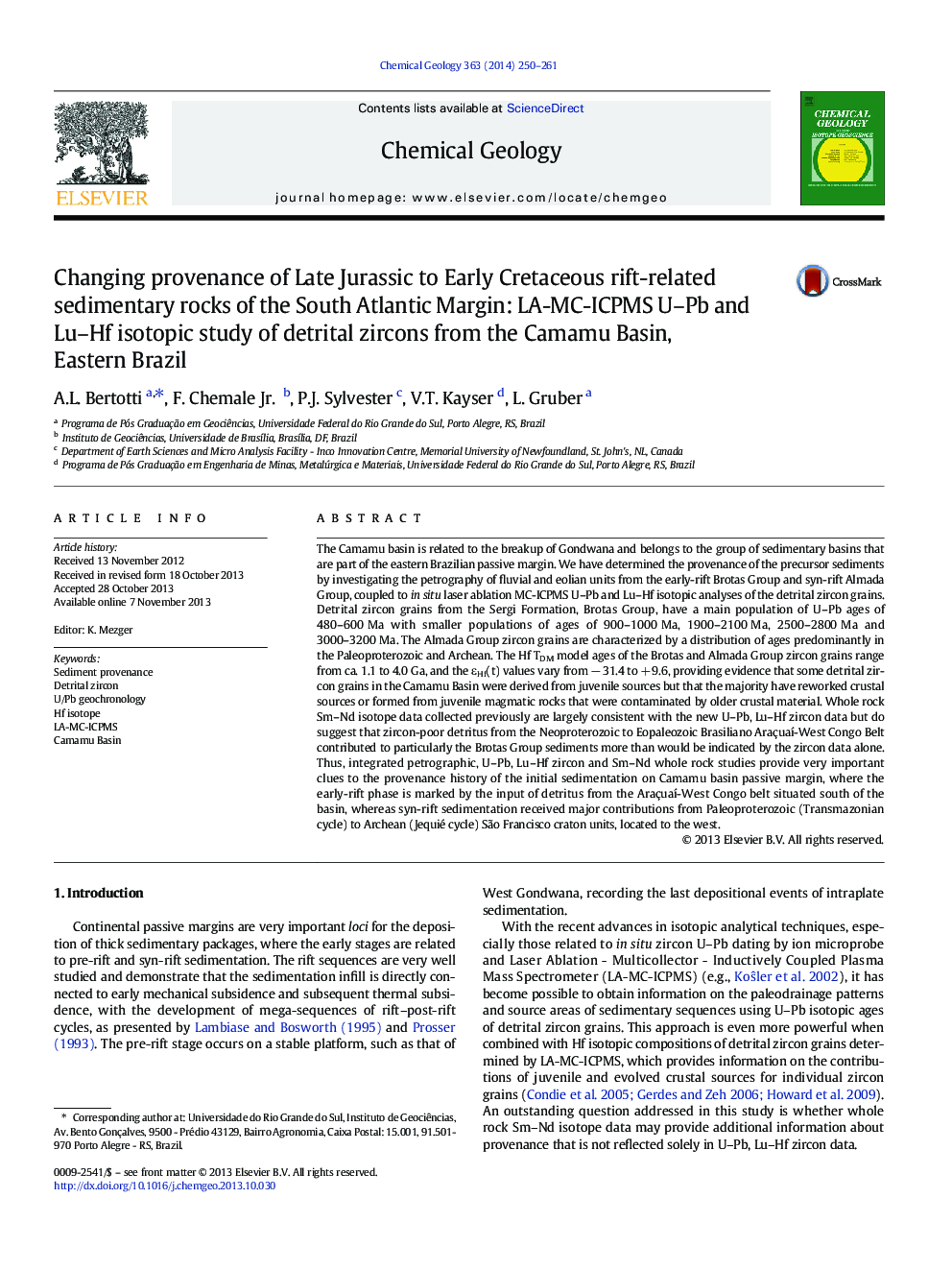| کد مقاله | کد نشریه | سال انتشار | مقاله انگلیسی | نسخه تمام متن |
|---|---|---|---|---|
| 6436699 | 1637607 | 2014 | 12 صفحه PDF | دانلود رایگان |

- Early-rift phase is marked by the input of Neoproterozoic to Eopaleozoic source.
- Syn-rift sedimentation clearly received a contribution from the western terranes.
- Hf isotopes provided evidence that most zircons have reworked crustal sources.
The Camamu basin is related to the breakup of Gondwana and belongs to the group of sedimentary basins that are part of the eastern Brazilian passive margin. We have determined the provenance of the precursor sediments by investigating the petrography of fluvial and eolian units from the early-rift Brotas Group and syn-rift Almada Group, coupled to in situ laser ablation MC-ICPMS U-Pb and Lu-Hf isotopic analyses of the detrital zircon grains. Detrital zircon grains from the Sergi Formation, Brotas Group, have a main population of U-Pb ages of 480-600 Ma with smaller populations of ages of 900-1000 Ma, 1900-2100 Ma, 2500-2800 Ma and 3000-3200 Ma. The Almada Group zircon grains are characterized by a distribution of ages predominantly in the Paleoproterozoic and Archean. The Hf TDM model ages of the Brotas and Almada Group zircon grains range from ca. 1.1 to 4.0 Ga, and the εHf(t) values vary from â 31.4 to + 9.6, providing evidence that some detrital zircon grains in the Camamu Basin were derived from juvenile sources but that the majority have reworked crustal sources or formed from juvenile magmatic rocks that were contaminated by older crustal material. Whole rock Sm-Nd isotope data collected previously are largely consistent with the new U-Pb, Lu-Hf zircon data but do suggest that zircon-poor detritus from the Neoproterozoic to Eopaleozoic Brasiliano AraçuaÃ-West Congo Belt contributed to particularly the Brotas Group sediments more than would be indicated by the zircon data alone. Thus, integrated petrographic, U-Pb, Lu-Hf zircon and Sm-Nd whole rock studies provide very important clues to the provenance history of the initial sedimentation on Camamu basin passive margin, where the early-rift phase is marked by the input of detritus from the AraçuaÃ-West Congo belt situated south of the basin, whereas syn-rift sedimentation received major contributions from Paleoproterozoic (Transmazonian cycle) to Archean (Jequié cycle) São Francisco craton units, located to the west.
Journal: Chemical Geology - Volume 363, 10 January 2014, Pages 250-261